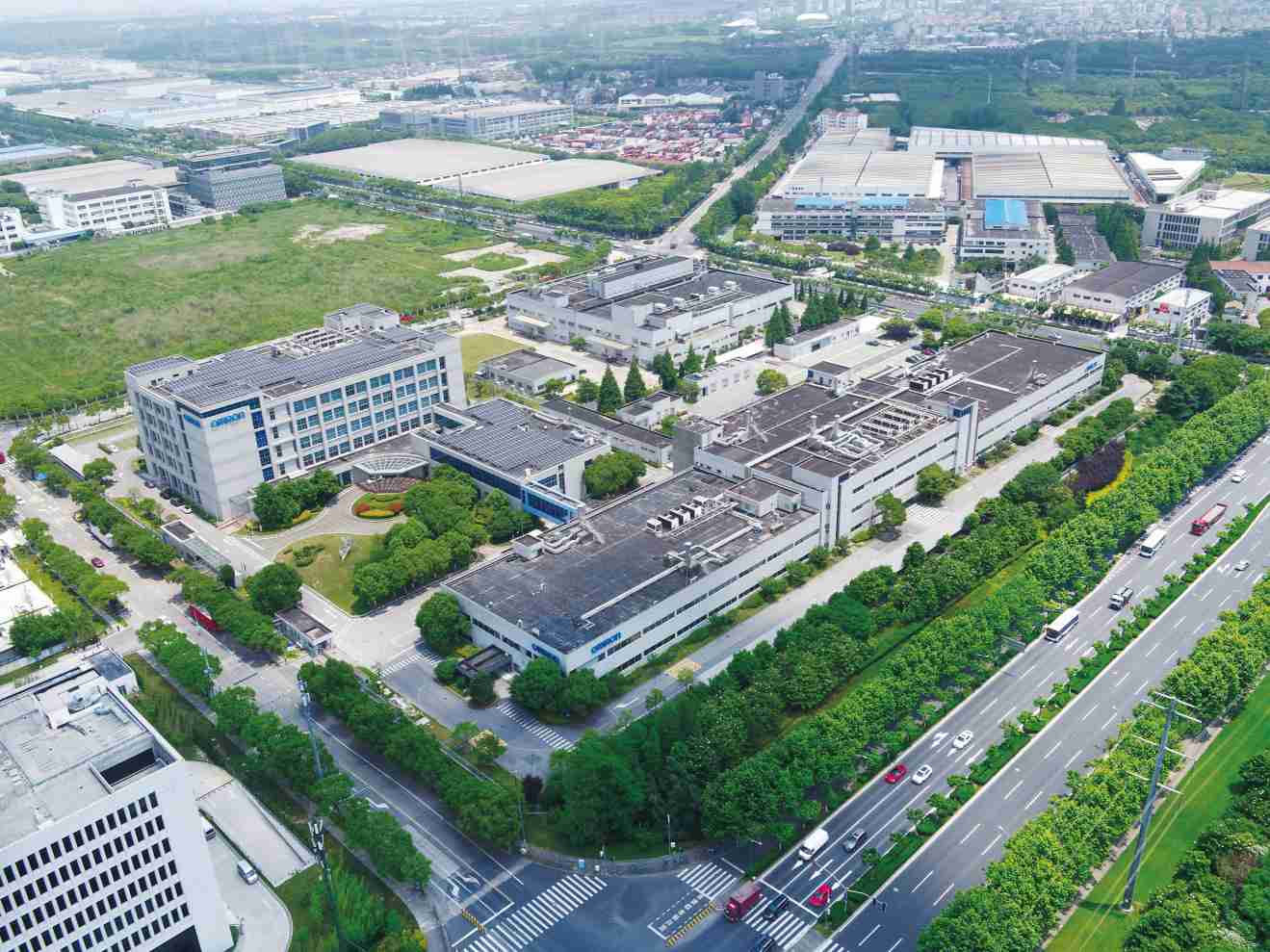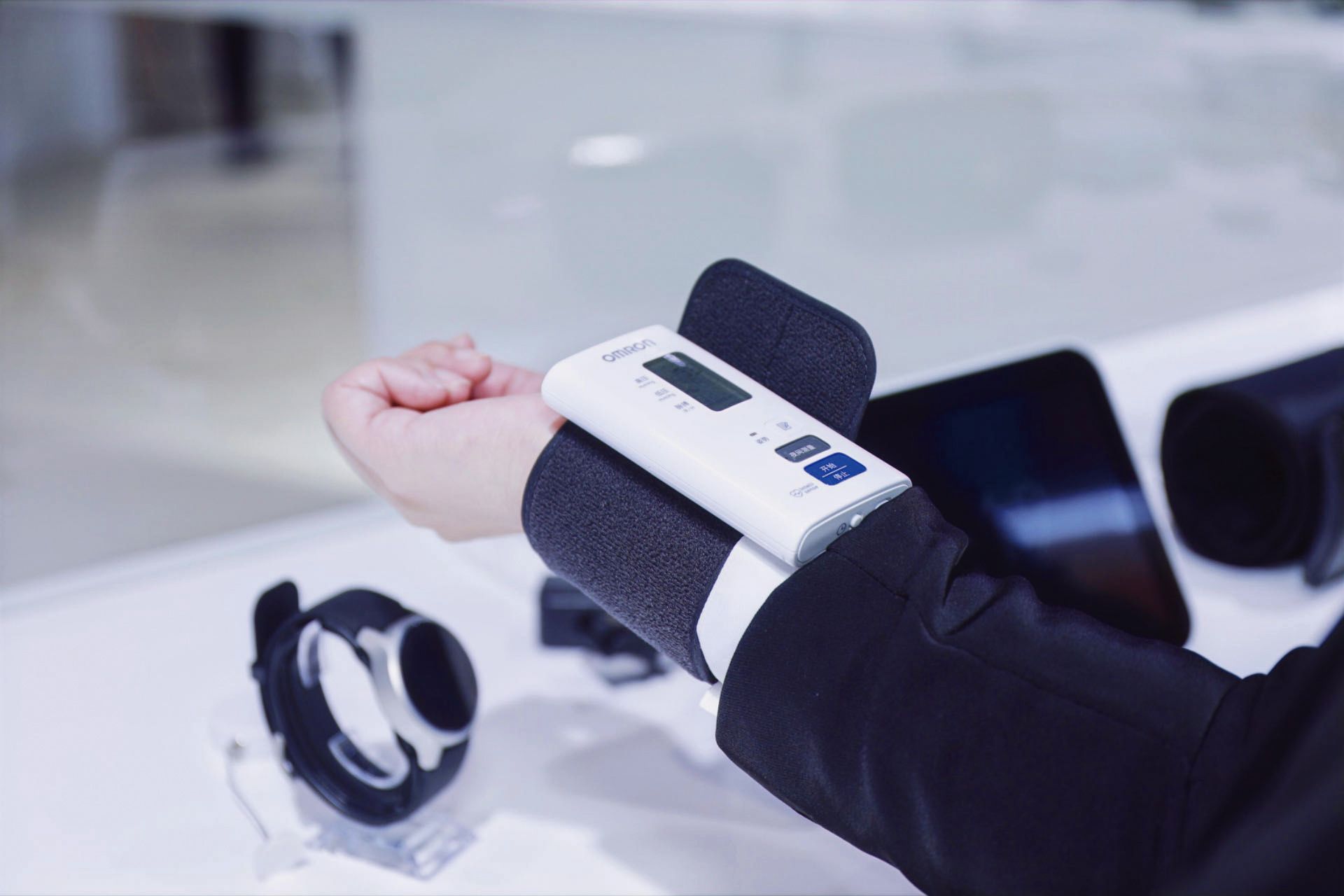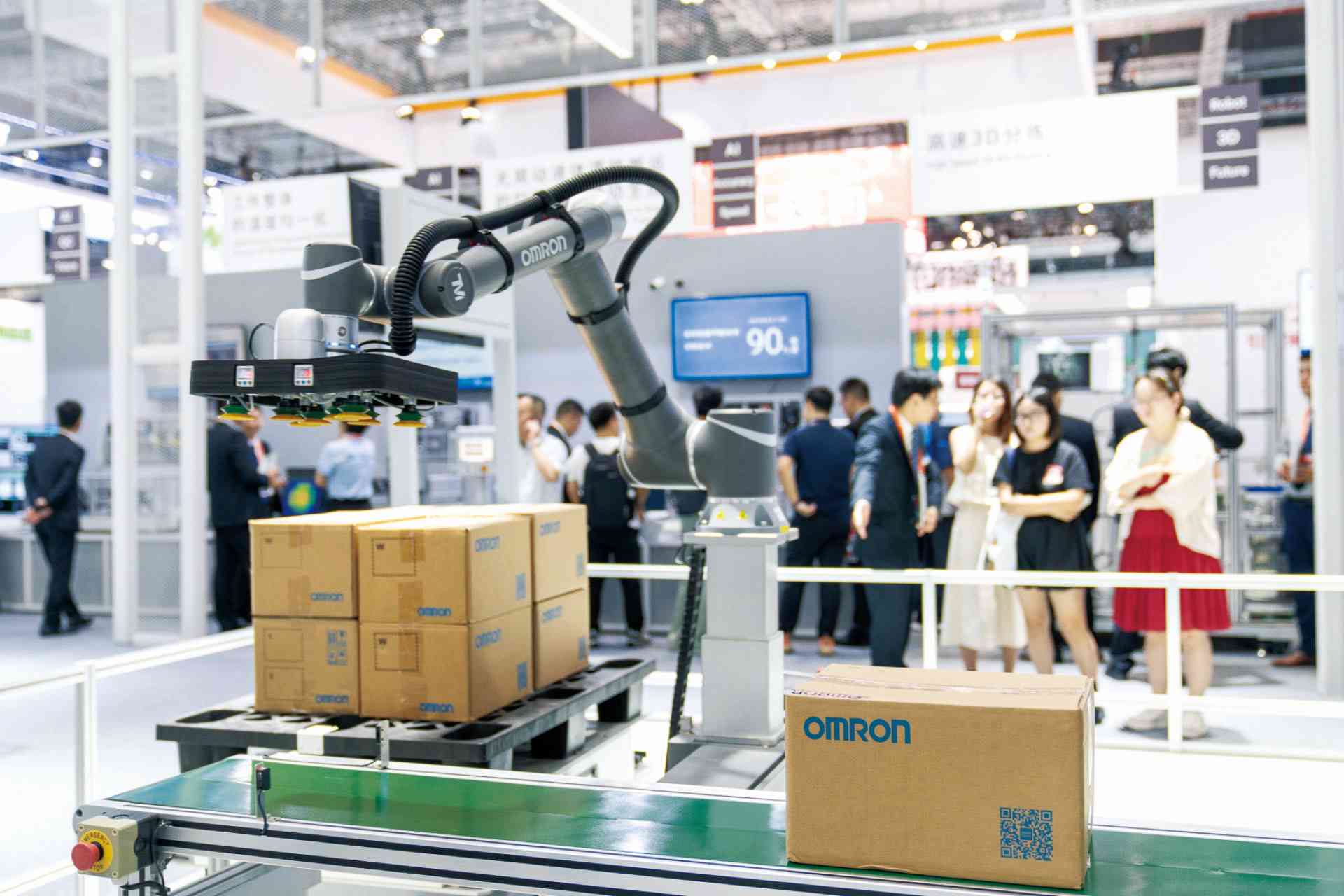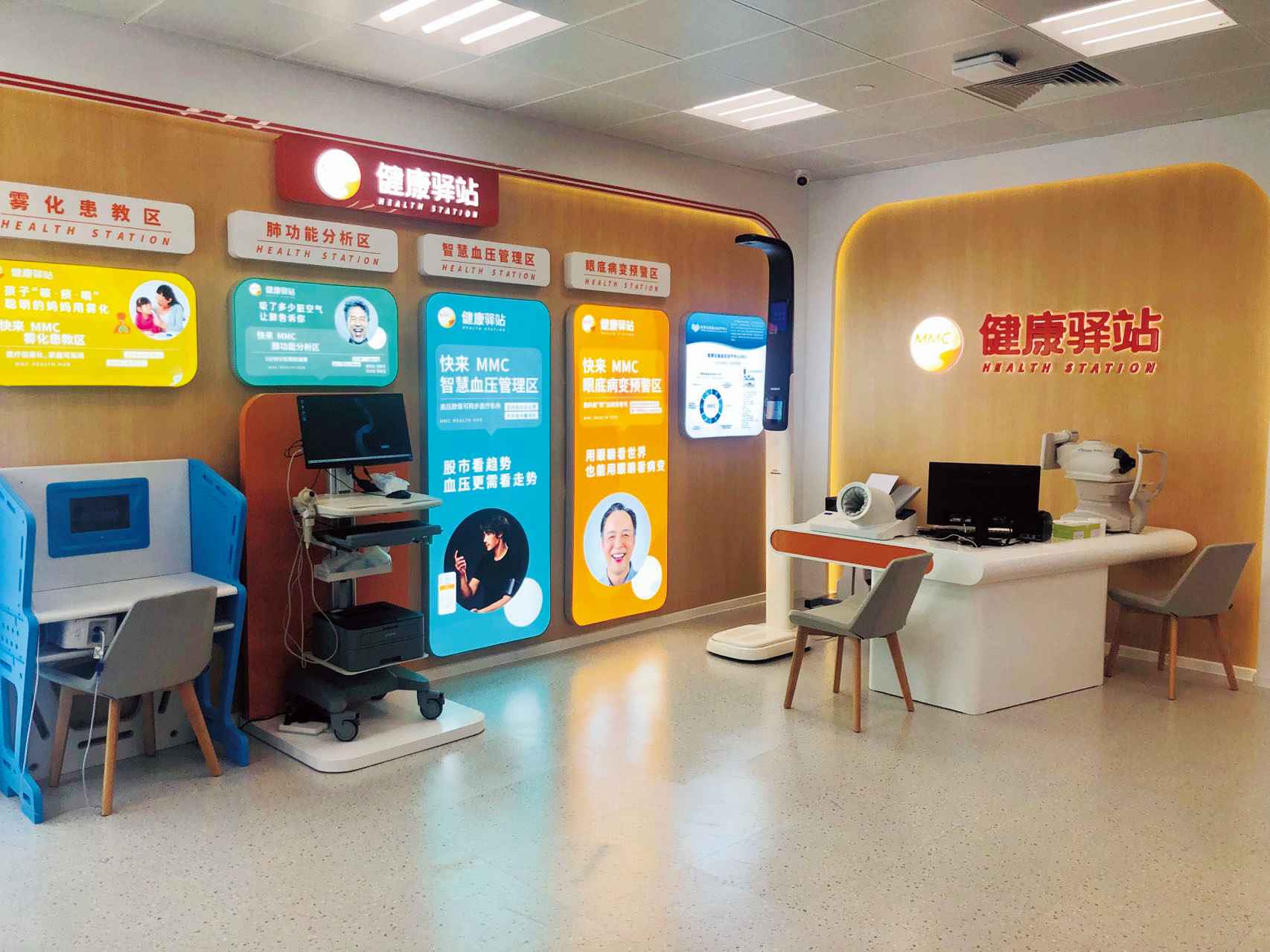Generating comprehensive societal benefits rooted in long-term strategic planning.
Dedicated to achieving carbon neutrality, realizing a digital society, and extending healthy life expectancies, OMRON is committed to developing an energy system that harmoniously blends reassurance, security, convenience, and environmental stewardship. By establishing sustainable manufacturing facilities and infrastructure, the company aims to unleash the full potential of societal operations and production. Furthermore, it emphasizes that “a participatory approach is indispensable to universal access to healthcare” and advocates a series of policy measures aimed at preventing and managing major diseases while promoting healthy aging, thus fostering a sustainable future in collaboration with stakeholders.

Businesses are the pulsating heartbeats of our socio-economic landscape, intertwining social responsibility with intrinsic business value. The question for these entities is, in a world of ceaseless evolution, how can they keep up with society’s needs? In an era of rapid transformation, which enterprises can carve out a distinctive, lasting legacy? OMRON, a pioneering Japanese company with a global presence, emerges as a standout exemplar, weaving a narrative of evolution and remarkable progress through its innovative endeavors.
Building an intelligent factory powered by digitization
Nowadays, digitization is more than just a trend; it’s an imperative for business evolution. As a trailblazer in sustainable manufacturing, OMRON spearheads the new manufacturing concepts of “Autonomation Beyond Human Ability” and “Advanced Collaboration between Human and Machines”. Driven by on-site digital engineering innovations, the company constantly seeks novel manufacturing paradigms, examining the evolving role of humans within them,and crafting tailored solutions.
Yang Wensheng, the head of a new energy auto parts factory in Chongqing, grappled with rising customer expectations and an expanding product portfolio as his business grew. Introducing more production lines would significantly increase both capital and labor expenses, and time costs would be another challenge. Yet, even in the face of economic uncertainties, the factory’s consistent success in securing customer orders was heartening. Amidst feelings of gratitude and mounting pressure, Yang dreamt of a single, versatile production line that can simultaneously produce dozens of different products and is equipped for intelligent manufacturing, automated packaging, and automated transportation, all without requiring additional personnel. While discussing these ideas at a banquet, he was pleasantly surprised when his friend suggested a potential solution. His friend mentioned that specific technical solutions from a company could improve production efficiency at reasonable costs.

His friend pointed to OMRON as the solution provider. Initially, Yang was skeptical because he associated this company primarily with medical devices like digital sphygmomanometers and thermometers. How could OMRON assist in transitioning an ordinary plant to an auto- mated, digital, intelligent one?
A week later, guided by his friend, Yang Wensheng visited one of OMRON’s production bases in Shanghai. During his visit, he observed OMRON’s cutting-edge technologies in action, including high-speed 3D sorting, human-machine collaborative palletizing, AI-driven visual inspection, and more. Additionally, the lean manufacturing management of the Shanghai factory deeply impressed him.
The OMRON Shanghai Limited Liability Company(OMS), established in 2005, stands as a symbol of smart and green manufacturing. Over the years, it has evolved into the OMRON’s largest production bases for industrial automation, seamlessly integrating production, R&D, technological support, and post-sales services for control equipments. Guided by the innovative manufacturing philosophy, “i-Automation!”, OMS consistently forges ahead in the do- mains of automation and digitalization. By amplifying investments in visualized production line, embracing IoT technology, and deploying tools like SPC, the factory adeptly navigates quality variances and risk management and control. It addresses current challenges in the Chinese market, such as lack of skilled professionals, low-carbon transitions and diversified consumer demand, by leveraging solutions that are efficient, adaptive, and productive. In do- ing so, it paves the path for sustainable growth both for itself and the broader industry.
Seeing all of this, Yang contemplated, “This is my ideal factory!” He wondered if OMRON’s advancements in automation and digitalization could be applied to his own plant. After all, his plant specialized in new energy auto parts, entirely different from the products manufactured at OMRON’s Shanghai Factory.
An OMRON representative introduced the company’s core strengths to Yang. Positioned as a global vanguard in digital transformation within the automation sector, OMRON had unveiled their “i-BELT” service in industrial automation — an on-site flexible data solution tailored to address carbon reduction challenges in manufacturing, quality, equipment, and energy. This service integrates OMRON’s unique know-how and technology in factory automation and on- site control. By bridging the gaps in data collection, visualization, analysis, and management, it offers integral data application services tailored for new energy auto parts manufacturers, continuously upgrading the manufacturing facility.
At the facility, Yang Wensheng also marveled at OMRON’s advanced industrial robots and the integrated robot controllers that bolster high-level automation. These controllers, through a synergy of control engine and construction process, enable the robots to operate swiftly and flexibly, balancing both efficiency and safety. With robots achieving precision akin to skilled artisans, the productivity soars, relieving the shortage of skilled professionals on the production line. OMRON’s representative further told Yang about their use of 3D simulation and digital twins in on-cite equipment designing and examining. These technologies abate equipment input time and related costs.
OMRON’s team also introduced their innovative applications of Programmable Logic Controllers (PLCs), industrial robots, and CNC machine tools. They assured Yang that these solutions could elevate his factory into a new “intelligent factory,” enabling efficient and precise operation of automated equipment. Moreover, the ongoing adoption and accumulation of digital technologies could pave the way for future enhancements in building a digital factory.
Fueling green manufacturing for low-carbon value
Yang Wensheng had heard that with advancements in factory automation and digitalization, energy costs could be significantly saved. He wondered: Is OMRON employing corresponding solutions matching the clients’ increasing energy saving and low-carbon needs?
The OMRON representative explained that “green manufacturing”, central to China’s strategy for high-quality manufacturing, offers fertile regulatory ground for OMRON to accelerate intelligent manufacturing innovations and pioneer a green, low-carbon transition of the manufacturing sector. OMRON’s measures to promote carbon neutrality are not limited to reducing greenhouse gas emissions in its various facilities but also include providing independent products and services to help customers and society achieve carbon neutrality. For example, the combination of i-Automation! and i-BELT can assist customer companies in advancing carbon neutrality more comprehensively. OMRON can achieve “visualization” of the entire factory by integrating technologies like the Internet of Things, artificial intelligence analysis, and data applications. This enables improvements in energy consumption efficiency, as well as quality and “energy production efficiency”. This is the essence of decarbonization in the manufacturing industry, breaking through the limitations of energy-saving measures in on-site response.
Moreover,OMRON attachment and module solution business lunches “Green Project” . Even though each relay, switch, connector, sensor, or module may seem minuscule, they are integral to countless electronic devices. Addressing carbon emissions at this elemental level means significant reductions in the carbon footprint of the end products. Therefore, through the reduction of carbon emissions from these supplied products, a significant reduction in the carbon footprint of the customers’ products or services can be achieved.
The OMRON representative further shared that, the company adopted a comprehensive approach to environmental challenges, a societal matter. OMRON has integrated products, manufacturing processes, and purchases for addressing environmental concerns into the very core of their business operations. Apart from product offerings, OMRON is also strategizing to provide solutions that facilitate carbon neutrality, including carbon offsetting in the supply chain.
The representative told Yang that achieving these aspirations hinges on collaboration among Yang’s facility, OMRON, and the suppliers as a whole, and it would be excellent if they could collaborate to bring this ideal pattern to reality.
Furthermore, OMRON is dedicated to the widespread and efficient harnessing of renewable energy sources. By offering products like photovoltaic inverters and batteries for solar systems, the company aims to amplify green energy’s reach. Installing rooftop photovoltaic systems can reduce a factory’s dependence on grid electricity, mitigate risks associated with peak-time energy consumption, and significantly lower the energy consumption of the factory’s operations.
Impressed by his visit to Shanghai, Yang Wensheng found it to be an invaluable experience. He cordially invited the OMRON representative to tour his new energy auto parts factory, to discuss and explore potential improvements for his facility.
Providing health value: OMRON as the “neighborhood health caretaker”
Before leaving Shanghai, Yang Wensheng made a stop at the Qibao Vanke 2049 Chenghua Commercial Center. While searching for a special gift for his family, he chanced upon an OMRON’s MMC Health Convenience Store. Drawn by curiosity, he stepped inside. The “convenience store” was structured into several health experience zones, integrating intelligent medical devices with hospital-level experience. It offered complimentary services such as detection for fundus diseases, smart blood pressure management, and early alerts for arteriosclerosis, primarily catering to the elderly community members. After their health assessments, seniors not only received detailed health reports but also had access to a digital platform offering user-friendly health management tools, like online glucose regulation and intelligent blood pressure monitoring.
Yang Wensheng decided to give it a try. Within three minutes at the arteriosclerosis detection zone, he had readings of his blood pressure and arteriosclerosis index on the screen. Moving to the fundus lesion detection zone, he used the medical screening tool. After a short minute, he scanned a QR code, accessed the health assistant mini-program, and entered personal details like height, weight, and blood pressure readings. Soon after, a concise electronic report was available, along with an insightful interpretation. Yang was profoundly impacted by the experience. He realized that OMRON’s capabilities extended beyond just manufacturing blood pressure monitors. The company has been actively partnering with local community hospitals and pharmacies to assist in addressing and managing China’s pressing social issues of an aging population and the rise of chronic diseases.
Creating a sustainable future with innovation at the core
Since its establishment 90 years ago, OMRON has been unwavering in its commitment to address societal needs through innovation and to create greater value for society. This corporate value harmonizes perfectly with the enduring Chinese philosophy of “benefiting the world”. Both emphasize the importance of embracing social responsibilities and integrating individual growth with the larger narrative of societal advancement and transformation.
Many of OMRON’s remarkable innovations have been sparked by societal needs. In March 2022, OMRON unveiled its ambitious long-term vision, “Shaping the Future 2030” .This roadmap is designed to realize three pivotal objectives: achievement of carbon neutrality, realization of a digital society, and extension of healthy life expectancies, thus contributing to a sustainable future for all.
Focusing on carbon neutrality, OMRON envisions an energy system that harmoniously blends reassurance, security, convenience, and environmental stewardship. To this end, the company champions the widespread and efficient adoption of renewable energy, fostering a mutualistic relationship between societal growth and environmental preservation. Concurrently, by endorsing distributed energy infrastructure, OMRON aids in swift power restoration following emergencies or catastrophes.
The company’s vision also resonates with China’s current strategic mission of “developing new electric power systems based on new energy sources.” By amplifying the application of renewable energy, OMRON facilitates the decarbonization of power grids, facilitating the energy structure transition. This ensures that the power generation, transmission, loading, and storage can be more adaptively synchronized, effectively mitigating the energy scarcity issue.
In the pursuit of building a digitized society, OMRON emphasizes the development and integration of manufacturing facilities and infrastructure for a sustainable society. The company advocates a harmonious collaboration between highly-automated machinery and human expertise, aiming to unleash the full potential of societal operations and production. More- over, OMRON foresees a manufacturing paradigm that seamlessly merges virtuality with reality. From production line setups to maintenance, and spanning production, quality control, inventory management, and energy utilization, online management can be achieved via cutting-edge technologies like “digital twin”. Efficiency can be further enhanced by lean manufacturing, as well as remote operation and management.
Such a vision of digital society aligns perfectly with China’s fervent push for digital transformation. Amid China’s consumption upgrade, factories are veering towards more flexible and customized manufacturing. Leveraging digitalized manufacturing equipment and facilities to empower industrial workers and achieve more intelligent and efficient manufacturing in Chi- na will become a collaborative endeavor for the vast majority of the manufacturing sector, including OMRON.
Regarding health, the “Healthy China 2030” initiative, introduced in 2016, underscores that “a participatory approach is indispensable to universal access to healthcare.” The initiative also encompasses a number of targeted measures highlighting “putting prevention first while combining prevention with treatment”, to prevent and manage major diseases and promote healthy aging. OMRON perceives “extending healthy life expectancy” as a key goal. The company is unwavering in its dedication to designing and promoting cost-effective diagnostic tools for chronic ailments, as well as cardiovascular and neurovascular conditions. Besides, it leverages AIoT technologies to offer supplementary diagnostic and therapeutic services to healthcare institutions while ensuring premier preventive care for the widest demographic, effectively addressing the challenges posed by an aging population.
As an enterprise deeply rooted in the Chinese market and seamlessly integrated into China’s economy, OMRON has played a dual role as an observer and active contributor to China’s journey towards digitization, intelligence, and global growth. Looking ahead, under the long- term vision Shaping the Future 2030, OMRON is dedicated to ceaseless innovation, introducing state-of-the-art technologies and pioneering solutions to the Chinese market. Together with a myriad of industry partners in China, OMRON is set to craft and share in a brighter, digitally advanced, and sustainable future.






 Back
to top
Back
to top